quadcopter
Latest

ESPN's Drone Racing League returns with faster, bigger races
Last year, I asked a simple question: Can drone racing become as big as eSports? While we wait to find out, one of the leading race organizers -- the Drone Racing League -- is making all the right moves this year to make that answer yes. One of the keys to achieving that, the DRL hopes, is the introduction of the Racer3 drone, which will be the standard craft all pilots in the DRL race with. Unsurprisingly, it's more powerful and agile than its predecessor (the Racer2, obviously) and could be the shot in the arm the sport needs to go mainstream. The Racer3 should make races -- which air on ESPN starting June 20th -- even more thrilling, luring more fans (and, by association, lucre) to the game.
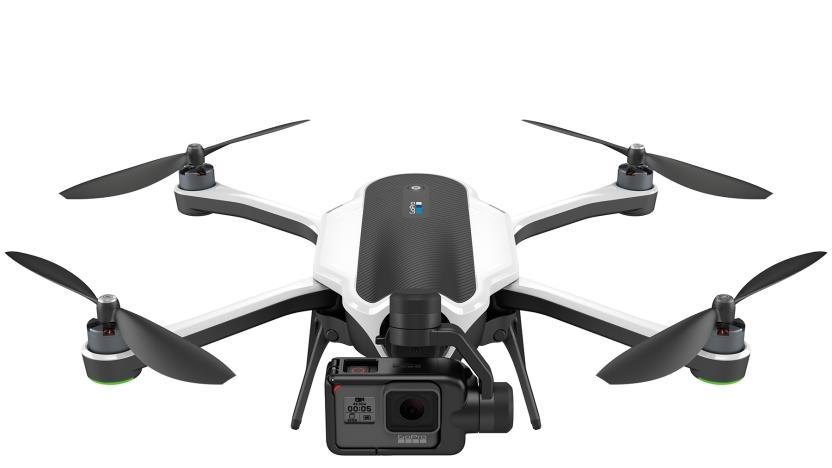
GoPro launches its Karma drone in the UK
GoPro's foray into drone development has been troubled, to say the least. The highly anticipated Karma launched in the US last October, only to be recalled a few weeks later. The reason? Some of them were falling out of the sky (eesh). As a result, GoPro never released the product in the UK. Until now, that is. Karma has finally arrived in Britain, as well as Spain, Italy and Germany. A full drone bundle, which comes with a Hero5 Black camera, will run you 1,400 euros, or £1,200 in the UK. Otherwise you can buy the quadcopter on its own for 1,000 euros, or £870. Notably, the Karma is more expensive than we thought. Originally, the complete bundle was given a £999 price tag in the UK, but it appears that's now risen by as much as £200. We've asked GoPro for the reason behind the price hike, but suspect it's Brexit-related.
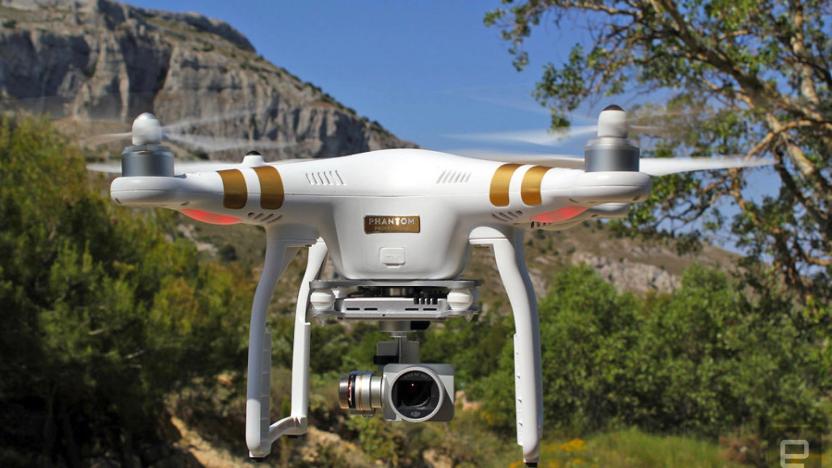
Airspace rights still unclear after drone lawsuit dismissed
Where exactly you're entitled to fly your drone in the US without fear of it being blasted out of the sky continues to be a legal gray area, after a judge dismissed another case brought against self-proclaimed "drone slayer" William Merideth. The Kentucky resident was originally charged in 2015 for firing a gun within city limits, shooting down David Boggs' Phantom 3 quadcopter in the process. The charge was dropped after a judge ruled the drone invaded Merideth's privacy since it was over his land, but Boggs subsequently sued Merideth in federal court seeking damages of $1,500 to cover the cost of the Phantom 3. This case was recently dismissed on something of a technicality, though, leaving a key legal question around airspace rights unanswered.

Airbus unveils an autonomous, modular flying car concept
Flying cars face many obstacles, but one of the biggest is accommodating all the parts needed to both drive and fly -- their designs amount to big, heavy compromises. Airbus and Italdesign want to try something different. They've just unveiled the Pop.Up, an autonomous concept that uses a modular passenger capsule to switch between four-wheeled ground transport and quadcopter flight. All you do is tell the vehicle's AI where to go -- it'll snap on air or ground modules based on both the available routes and your habits. Airbus even floats the possibility of shuttling your capsule through hyperloop tubes when they're available.

EE looks to drones and big balloons to tackle 4G 'notspots'
One of EE's biggest challenges is connecting rural customers. The UK network's 4G coverage is slowly improving, but there are still countless subscribers stuck in so-called "notspots." To help, EE is working on drones, balloons and trucks that can provide temporary access in a pinch. They'll never replace a traditional base station, but in the case of an emergency -- a flood or severe power outage, for instance -- they could offer a crucial line to the rest of the world. In the future, these "air masts" could also provide ongoing internet access, similar to Alphabet's Project Loon, while EE wrestles for planning permission to build new, permanent network hubs.

GoPro's troubled Karma drone is back on sale today
Surprise! GoPro's Karma drone is back on sale. GoPro recalled Karma in the run-up to the holidays last year due to instances where drones were losing power mid-flight (not cool, obviously). In early January, the company cryptically "announced" that it would give details on Karma's return in early February.

ICYMI: Reptile robots in the wild
Today on In Case You Missed It: BBC One's nature show, "Spy in the Wild," partnered with a robotics division in order to design and produce two remote-controlled robot reptiles. Using bio-informed robotics, the team closely reproduced the creature's movements in the robots, which were constructed with motors, aluminum, carbon fiber and latex waterproof suits. The robo-reptiles -- a crocodile model and a monitor lizard version -- will be used to study real life animals up-and-close.
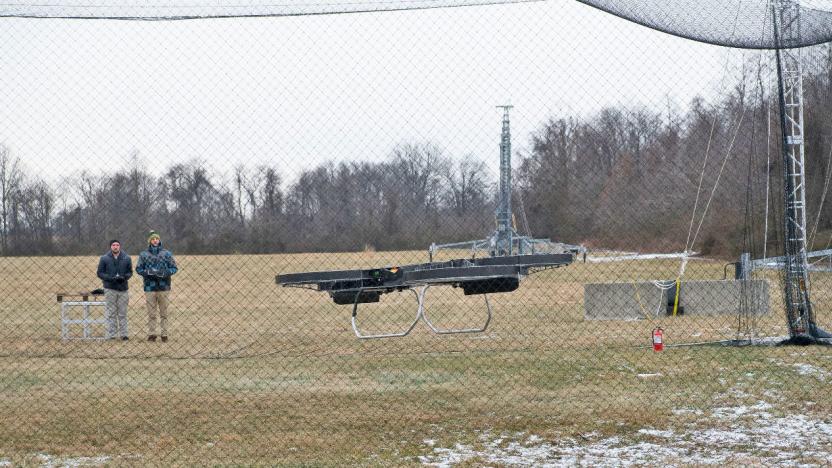
The US Army successfully flies its hoverbike prototype
The Army has proven that the hoverbike its contractors are developing actually works during a flight demo with the Department of Defense. Dr. William Roper, director of the Strategic Capabilities Office for the Secretary of Defense, watched the large rectangular prototype quadcopter take off at the Aberdeen Proving Ground in Maryland on January 10th. The hoverbike began as a Kickstarter project by creator Malloy Aeronautics. Once Malloy secured a contract with the military, it teamed up with defense company Survice Engineering Co. to continue the bike's development. It has since become a joint project between the Army and the US Marine Corps.

UVify's Draco drone is a racing quad for everyone
You might be pretty handy with your DJI Phantom, but flying a racing drone is something else. Most consumer drones are programmed to make flying a cinch, but the trade-off is a lack of agility and speed. Racing drones right now are akin to making your own gaming PC: You need to get your hands dirty, know how everything works together and labor over it to get everything optimized. UVify wants to democratize the burgeoning sport with Draco, a ready-to-go speedy drone that can hang with the pros.
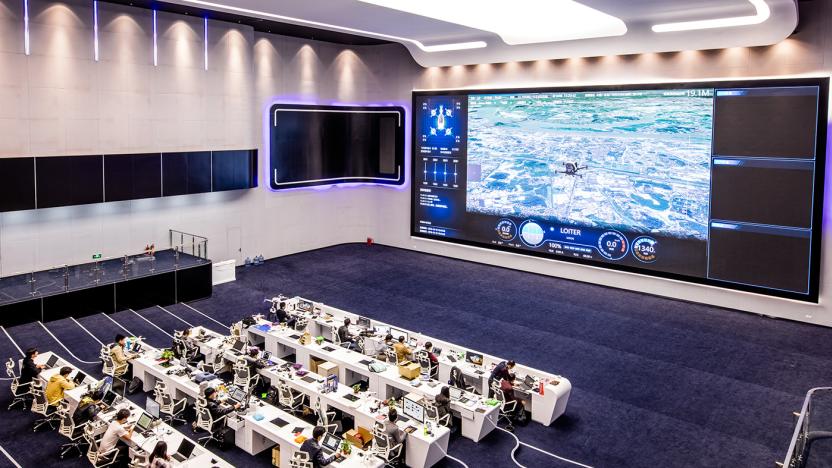
Ehang preps its flight command center for passenger drones
Almost exactly a year ago, Ehang surprised the world with its supersized drone, the 184, made for carrying a human passenger or artificial organs. Nevada even gave Ehang permission to test its quadcopter in the state as of June, but that was the last we heard from the drone maker, until now. As it turns out, the Chinese company has yet to perform a single test flight in the US, and earlier this month, it had to lay off about 70 people from its team of around 300, plus there were signs of financial problems -- including canteen food issues, missed payments to suppliers and diminishing consumer drone shipment numbers -- as far back as August, according to Chinese news site Xtecher. Perhaps to reassure worried folks, Ehang decided to shed some light on the 184's latest development.

UK government is considering a drone pilot test
The UK government is considering a "knowledge or situational awareness test" for all British drone owners, similar to a driving theory examination. The proposed quiz could be voluntary, according to the Department for Transport, or mandatory as part of a new drone registration system. It was referenced in a new consultation drawn up to keep casual pilots in check, while encouraging drone research by the private sector. "The safety of other airspace users and the general public is dependent on leisure drone users adhering to the rules and understanding the risks," ministers argue.

Parrot's quirky toy drones are slowly growing up
There was a time when Parrot was the name in consumer drones. That's partly because, way back in 2010 when it launched the AR.Drone, the DJI Phantom was still some years away. Today, the landscape is a little different: DJI now dominates the skies, while its competitors can't seem to catch a break. Except Parrot. The French company remains unfazed by the large industry that has grown around it and continues to do what it's always done: make fun, accessible products.

Drone Assist app tells UK pilots where it's safe to fly
One of the trickier aspects of drone ownership is knowing where it's okay to fly. Some places are obvious -- you should avoid airports, for instance -- while others can be a little more ambiguous. Your local park might seem like a harmless place to fly, but up above there could be restricted airspace. Drone Assist, a new app from the National Air Traffic Services (NATS), wants to help with a map that indicates if you're close to airspace used by commercial air traffic. It will also highlight power lines and buildings that could pose privacy concerns, such as schools and sports stadiums.

GoPro Karma review: A decent drone with stiff competition
When Karma was unveiled last month, there were two main takeaways. First was the lack of much-expected "follow me" features; second was the inclusion of a (not-expected) hand-held stabilizer, turning Karma into a "kit." GoPro CEO Nick Woodman would declare Karma to be "much more than a drone," pitching it as a complete video-stabilization system -- one that can be worn, held and flown. The big question was, would that be enough for buyers to overlook what appeared to be a pared feature set on the drone itself? At $799 (if you "bring your own camera"), and $999/$1,099 if you want to include a Hero5 Session or Black, Karma is priced aggressively, undercutting DJI's Phantom 4 if you factor in the cost of the hand-held stabilizer (DJI's cheapest equivalent costs an extra $300). But then DJI revealed the Mavic Pro and set fire to GoPro's plans. It's smaller, similarly priced and bests GoPro across the spec sheet. The question now is: Will GoPro's claim of being more than a drone be enough to lure casual filmmakers away from DJI's technologically superior product? On November 8th, 2016, GoPro issued a global recall for the Karma drone following cases of electrical failures causing a loss of power during flight. GoPro advises that owners can return their units to GoPro, or their place of purchase for a full refund. No replacements are being offered at this time. Though this review is still live on Engadget's site for posterity's sake, we have elected to remove the original score. Should GoPro resume selling Karma, we will re-asses our review and score accordingly.

Parrot brings fancy follow-me features to its Bebop 2 drone
With a price tag of $550/£440, Parrot's Bebop 2 drone is aimed at budding pilots who want more than a toy, but can't justify spending four figures and up on a flying camera. The problem with getting something in between, though, is you can't expect all the features of more expensive drones. There are a couple of third-party mobile apps floating about that add auto-follow features to the Bebop 2, but today Parrot is updating its official FreeFlight Pro app with what it claims is the "most accurate and reliable" implementation around.

'Icarus' machine can commandeer a drone mid-flight
Security researcher Jonathan Andersson has shown it's possible to hijack drones that rely on the DSMx signal protocol. Unlike conventional jammers, which simply strip control from the user, this technique gives the attacker full flight capabilities. In an email to Ars Technica, Andersson explained that his new "Icarus" system is effective because it observes the underlying protocol and then brute forces the "secret" shared between the drone and controller. In addition, the setup relies on a "timing attack vulnerability," effectively pipping the original transmitter's signal to the drone, so that it accepts the attacker's inputs and rejects the owner.

Making Karma: Behind the scenes with GoPro's camera drone
A typical GoPro camera launch is much how you'd imagine it to be: Extreme sport athletes perform for the press at a beautiful outdoorsy location. But where I am today is not a typical GoPro launch. That won't happen for a few weeks yet, when CEO and founder Nick Woodman will present the company's much-anticipated Karma drone to the world. Karma's reveal will be the climax to one of GoPro's most scrutinized business moves yet. After multiple delays and much investor speculation, it's important that GoPro get this one right. Will Karma silence GoPro's doubters, or give them more to talk about? Engadget spent some time behind the scenes during Karma's crucial final stages to find out.
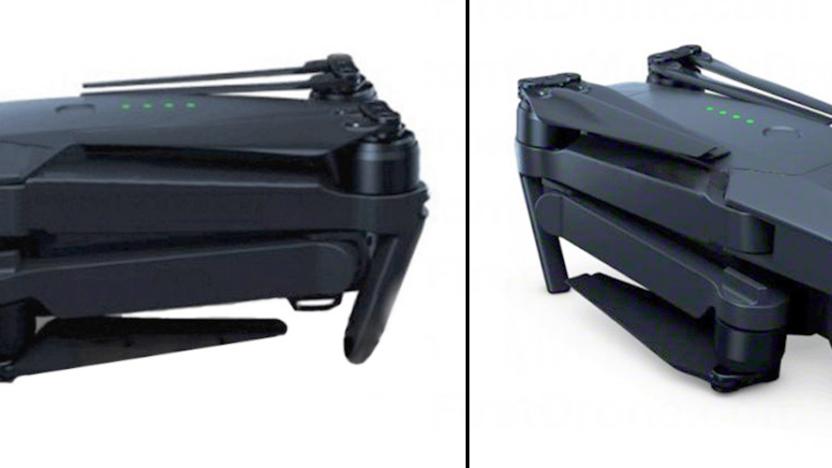
DJI's folding 'Mavic' drone images leak out
DJI's Adam Najberg recently told Engadget that if the average consumer is going to buy a drone, "size is going to be an issue. Also ease of use." Judging by a recent leak, the company may not be just musing about such a product. Drone site Heliguy leaked an image of a small camera drone that collapses down for easy transport. If accurate, it could be called the "Mavic," a name DJI recently trademarked.

DJI exec hints at future pocket-sized camera drones
It's a simple question: How would you sell my Dad a drone? Right now, most drone buyers are professionals, hobbyists or video enthusiasts. That leaves a pretty big number of people not currently browsing for a quadcopter. At least, not yet. My Dad is one of those people, so if you can sell him one, you're onto something. When I asked that question to Adam Najberg, DJI's Global Director of Communications, his answer was simple: "Size is going to be an issue. Also ease of use." So something smaller and simpler. No surprises there. But Najberg represents one of the biggest names in drones, so when he tells me what such a drone might look like, I listen.
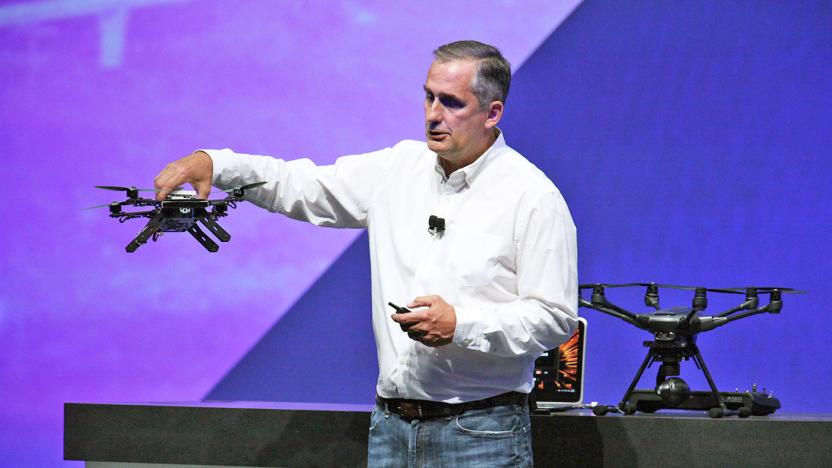
Intel intros a ready-to-fly drone for software developers
Intel has introduced a quadcopter called Aero at its annual developers conference, and we'll bet you can guess its target audience based on the event. That's right, Aero was specifically designed not for hobbyists or for commercial purposes, but for developers who want to create and test apps for drones. The company said it's the "fastest path available from Intel for developers to get applications airborne." Aero is powered by an Atom processor and comes equipped with Intel's RealSense camera for vision. It's also preloaded with AirMap, an app that tells you where you can and can't fly, gives you real-time info on wildfires and the like, as well as gives you an easy way to plot routes.







